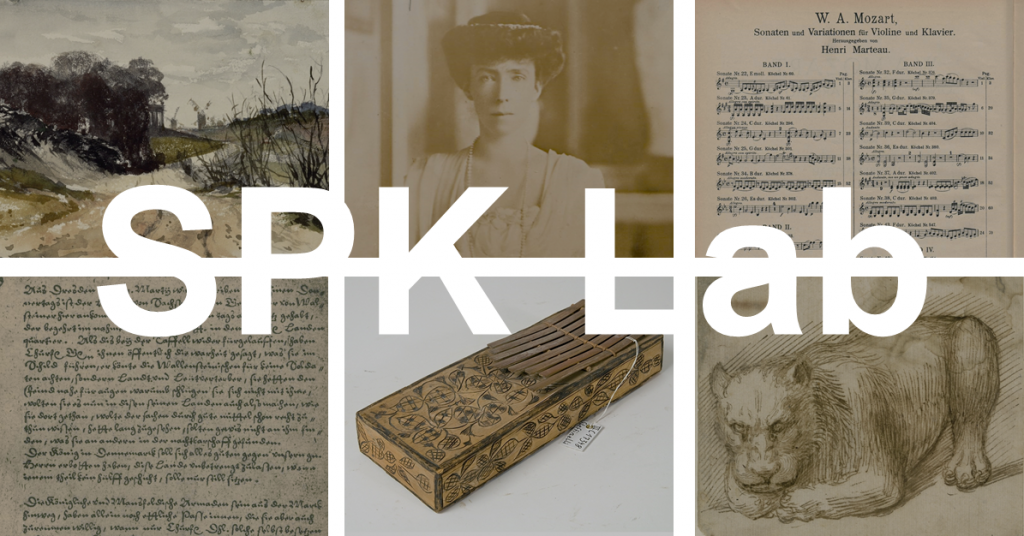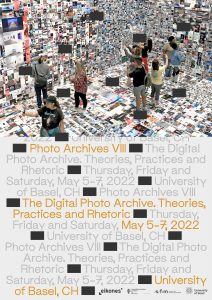Anke John / Wilma Schütze (Universität Jena) Mit Social-Media-Serien, Podcasts und Filmen von Stream...
Podcast für Lehrkräfte: Ohne Angst für demokratische Werte eintreten
Von: Ronja Kummer Was kann ich tun, wenn ich als Lehrkraft Zeug*in von diskriminierenden Verhalten o...
Naviguer sans danger? Herausforderung „Saarschleife“ um 1600
Als Jean Huart, der Statthalter (lieutenant) des „deutschen“ Verwaltungsbereichs im Herzogtum Lothri...
Blaues Grass – Wie ich plötzlich Fan einer american roots music-Band wurde
von Jochen Schnapka Ein Dachboden irgendwo in den USA. Matt intoniert den Grundakkord au...
Der Donbass als casus belli
von Oleskandr Zabirko Was ist eigentlich Donbass und von wem wird er bewohnt? Antworten mit Blick ...
Ein Publikationssystem ohne Verlage? Gespräch mit Petra Gehring (2)
Petra Gehring ist Professorin für Philosophie an der TU Darmstadt und befasst sich als Wissenschaft...
Call for Participation: Das SPK Lab sucht Partner*innen zur Mitgestaltung!
Das SPK Lab ist auf der Suche nach Nutzer*innen von Kulturerbe-Daten, die uns helfen neue Formate zur Förderung der kreativen und (nicht-)wissenschaftlichen Nachnutzung unserer digitalen Bestände zu entwerfen und umzusetzen. Möchten Sie uns unterstützen, die besten Wege zur Bereitstellung unserer Daten zu finden? Wollen Sie sich für die Öffnung von Daten aus Kulturerbe-Sammlungen stark machen und das SPK Lab bei diesem Prozess mitgestalten? Dann sollten Sie sich bis zum 29. Mai 2022 als Mitglied des neuen Netzwerkes SPK Lab Partner bewerben!

Was ist das SPK Lab?
Das SPK Lab ist ein Projekt der Stiftung Preußischer Kulturbesitz in Berlin (SPK), die mit ihren Museen, Bibliotheken, Archiven und Forschungsinstituten eine der bedeutendsten Kultureinrichtung der Welt ist und vielfältige Sammlungen aus allen Epochen und Regionen der kulturellen Überlieferung beherbergt.
[...]
Quelle: https://dhd-blog.org/?p=17805
Photo Archives VIII. The Digital Photo Archive. Theories, Practices and Rhetoric
Photo Archives VIII. The Digital Photo Archive, eikones, Basel
The current ‘archival moment’ (Daston 2017) is characterised by the unprecedented online access to visual material, but also by deep concerns about loss of information. Scholars are confronted with the limitless production and circulation of (sometimes self-produced) digital images, as well as with the fragility of aggregated image clusters. Digitisation and digital photography are established practices, and numerous methods and approaches to the storage and retrieval, indexing, interoperability and sustainability of digital image collections have been tested, debated, applied, expanded, questioned and discarded.
These technological developments mean that more and more people all over the world are involved in creating, manipulating and collecting images. Images and metadata are copied, scraped, aggregated and rearranged in feeds, clusters and databases, both for commercial or scientific purposes. Moreover, big visual data serve as the basis for developing computer vision techniques. While these multifaceted collections evade canonical notions of the archive, archival structures and practices have become a nexus of the post-digital condition.
[...]
Photo Archives VIII. The Digital Photo Archive. Theories, Practices and Rhetoric
Photo Archives VIII. The Digital Photo Archive, eikones, Basel
The current ‘archival moment’ (Daston 2017) is characterised by the unprecedented online access to visual material, but also by deep concerns about loss of information. Scholars are confronted with the limitless production and circulation of (sometimes self-produced) digital images, as well as with the fragility of aggregated image clusters. Digitisation and digital photography are established practices, and numerous methods and approaches to the storage and retrieval, indexing, interoperability and sustainability of digital image collections have been tested, debated, applied, expanded, questioned and discarded.
These technological developments mean that more and more people all over the world are involved in creating, manipulating and collecting images. Images and metadata are copied, scraped, aggregated and rearranged in feeds, clusters and databases, both for commercial or scientific purposes. Moreover, big visual data serve as the basis for developing computer vision techniques. While these multifaceted collections evade canonical notions of the archive, archival structures and practices have become a nexus of the post-digital condition.
[...]
“A coalition of many forces which we are striving to get in Europe” – Petra Kelly zu Besuch bei der “Green Ban”-Bewegung in Australien 1977
von Jary Koch Informationen zum Autor: *1995 in Bielefeld. 2016-2020 Studium der Geschichtswissensch...
